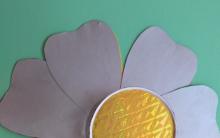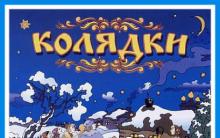Working professions that have been and will always be in demand, in modern world recede into the background. The profession of a shoemaker has appeared since the time when people began to wear shoes. There will always be demand for the services of a shoemaker. Regardless of the season, the true masters of this craft do not sit without work.
Sergey Pavlov at work Photo: From the personal archive
Sergey Pavlov told AiF - Chuvashia about the peculiarities of the work of a shoemaker and why he is not offended when he is called that.
Maria Gracheva, "AiF" - Chuvashia ": How did you learn this craft?
Sergey Pavlov: As they say, life teaches everything. In the 1990s, I worked at the Aggregate Plant. You understand, then nobody had enough money for anything. Here's a colleague invited to work with his friend in the production of shoes. I had no idea what to do, the main thing is that they offered a salary five times more than they paid at the plant. There he learned how to make major shoe repairs, then got into the production of sewing boots and boots. Well, it dragged on. After some time, having gained experience, I decided that I could work for myself - I filled my hand.
- I have never met women in shoe repair. Or is it not for women?
Why. Russian women can learn everything. They fly into space. Yes, and they are excellent at repairing and making shoes. There are few female colleagues in our city, but we meet in the store where we buy materials for repairs.
There are "nuances"
- Still a shoemaker, a shoemaker, a shoemaker or a shoe repairman?
Many are offended when they are called shoemakers. It seems to sound disingenuous. And I, when they ask me about work, proudly say that I am a shoemaker. I don't see anything shameful in this. But the Russian folk “swears like a shoemaker” and “drinks like a shoemaker” - this is not about me. It is important to know your job well, to communicate with people. In my business, the main flow of work is regular customers.
- Is it really always cheaper to repair shoes than buying a new pair?
If the shoes are from the "Chinese consumer goods" series, of course, it's better to go buy a new one. And good shoes, as a rule, after the second year, socks are only brought for repairs.
A true master of his craft will always have a job. Photo: From the personal archive
How many pairs of shoes a day pass through your hands?
On average, about 30 people contact me per day. Who will bring one pair, who will bring two. There is some seasonality, of course. In summer, for example, there is more time to drink tea than it is now.
- Do the owners of shoes often do not return for their pair? Where are you going "good"?
There are cases when they return for their shoes in 1.5-2 years. Usually, of course, I keep such shoes for a year, then I give them to good hands. And sometimes it will lie in the garage for several years. Although usually good expensive shoes are not left for a long time.
Shoe "pro"
- What should be a good master?
In any profession you need to be a good man. Another important thing I've learned as a shoemaker is patience. I come across different clients, but I know my business well, I can explain what's what calmly and clearly. The main thing is to love what you do. And I've been shoemaking for 23 years.
- Can you shoe a flea?
Only if the flea is big (smiles). Of course, we don’t do jewelry work here, but sometimes, it happens that they bring expensive boots with a hole, so you have to be creative in approaching the task, figure out how to quietly correct the situation.
Do you meet people by their shoes?
In the first few years I paid a lot of attention. Shoes even dreamed, honestly. Now it's just a job. I used to sew shoes for myself, my wife and mother-in-law. Now I will go and buy. You need to make the right choice. Now you can buy good shoes cheaply.
According to GOST 23251 “Shoes. Terms and definitions, types of footwear include boots, boots, pumps, sandals, shoes, indoor shoes, half boots, half boots, boots, low shoes, sandals, dudes, moccasins, opanki, pantolets and tabi.
Suitable educational specialties: Cutter (tailor-cutter).Key items: Shoe production technology; Manage assembly operations.
Tuition fee (average in Russia): 30,000 rubles
Job description:
*tuition fees are per course.
Features of the profession
Until relatively recently, some 200 years ago, shoes were made exclusively by hand, individually or in tiny batches. This is what the shoemakers did. Today, shoes are mostly mass-produced. Masters employed in mass production are called shoemakers.
The designer develops sketches, the designer thinks over the design of the shoe, what parts it will consist of. When the parts are cut, they need to be put together - this is what the assembler does.
Assembling shoes is dozens of conveyor operations: from assembling the top to attaching the bottom. The more elements provided, the more operations have to be performed. This is assembly line work, and assemblers are considered the most numerous detachment of shoemakers. From the cutters, the conveyor receives individual parts of the top, which are gradually connected to each other, moving from worker to worker. First, the places of decorative seams are marked on the parts, then the edges of the parts are processed and polished and tinted, then they are sewn on sewing machine etc.
Sewing and decorating with decorative seams are very important operations that require precision and accuracy from the master. The vamp line and the edging line are the most difficult stages of work. The master leads the seam line one and a half - two centimeters from the edge, and the line, if it comes out crooked, cannot be torn and redone, especially if the shoes are leather. The needle leaves incorrigible marks on the shoe leather, and the damaged part is sent to marriage.
Finally, when the upper is ready, all the details are sewn and glued, the undercarriage of the boot can be attached to it. Various technologies can be used for this - from gluing to casting. To glue the sole, the finished top put on the block is smeared with glue at the junctions of the future connection. The sole is pressed against them with the help of a press. This is also very important point: if the outsole is glued sloppily, it will no longer be possible to correct the oversight.
A shoe assembler may specialize in making uppers, making bottoms, or joining uppers with bottoms.
Fashion, styles, shoe designs are constantly changing. This means that the shoe assembler has to constantly master new work algorithms, new operations. On the other hand, with experience comes skill, with which no innovation is scary anymore.
Cons of the profession. You have to work at a fast pace, it is usually noisy in the workshop, the fumes of dyes, adhesives, etc. are inevitably felt in the air. If you do not pay attention to your posture, long concentrated work can lead to back pain, to stoop. Long work on the legs can lead to the expansion of the veins in the legs, diseases of the joints.
Compensate for many production hazards can only be in a healthy way life, walking, swimming, comfortable shoes, etc. To protect their hearing from noise, workers use special anti-noise headphones, earplugs.
Workplace
A shoe assembler can work in shoe factories, workshops for individual tailoring of shoes (including orthopedic ones).
Salary pay
from 15 000 rub. up to 30,000 rubles
Important qualities
The profession of a shoe assembler implies good coordination of movements, a sense of rhythm, quick reaction, accuracy, the ability to concentrate and distribute attention.
Physical endurance is also required. Diseases of the central nervous system, cardiovascular system, musculoskeletal system, poor eyesight (if it is not compensated by glasses), allergies to certain substances do not allow working on a conveyor.
Knowledge and skills
The shoe assembler must know the technology of shoe production, own assembly operations.
Where do they teach
The profession of a shoe assembler can be obtained in colleges that train personnel for the shoe industry.
A shoemaker knows how to make not only new shoes, but also to repair old ones, so that the feet in shoes don’t get tired on the go, don’t get wet in the rain, don’t freeze in the cold, don’t sweat in the heat ... I also want the shoes to be beautiful. All this requires great skill from the shoemaker!
Today, fashionable and beautiful shoes are made in factories where there are many large and complex machines. A modern shoemaker must know the design of such machines well and be able to manage them. Therefore, he is no longer just a shoemaker, but an engineer. If you already know how to read, then, walking along the street, read different signs. If you've seen a sign that says "Shoe Repair" in big letters, know that that's where the real shoemakers are hiding.
But, in general, shoemaking does not hurt a home craftsman either. Of course, for this, the house must have suitable materials and tools. For example, you need pieces of leather, rubber and felt, strong threads, rubber glue. You need a very sharp knife to cut leather, rubber and felt. You also need an awl to pierce holes for a needle and thread. If you try, at home it is quite possible to make warm slippers and a comfortable insole yourself, to perform simple repairs. It's good when the family has its own craftsmen!
HISTORY OF THE PROFESSION ShoemakerThe history of footwear has more than one millennium, or rather, it begins approximately from the Upper Paleolithic, and maybe even earlier. If there were shoes, then there were those who made them. So, the profession of a shoemaker is one of the most ancient professions.
The word "shoemaker" is now a bit outdated. Today, in advertisements for job vacancies, “shoemaker”, “shoe repairman” are more common. However, the meaning of this profession, depending on the name, does not change. Throughout its long history, the shoemaker's profession has changed very little - the main role in shoe business as before, it is not technology that plays, but the skill of the performer.
HOW TO BECOME A SHOEMAKER It is not difficult to get the simplest profession of a shoe repairman, but only a few become true masters. There are many vocational schools who offer to learn this profession. Many students start earning good money pretty soon. In the process of learning, students master theory and, most importantly, practice, since there are special workshops at schools. After graduation, graduates are trained in shoe companies.
If we talk about individual tailoring, here a completely different level of skill is required from the shoemaker. This may also require higher education, which can be obtained at one of the institutes of light industry.
A POEM ABOUT A SHOEMAKER
Master, master, help -
The boots are worn out!
Hammer the nails harder -
We're going to visit today!
MYSTERY ABOUT THE SHOEMAKER
They put dexterous two hands
heels on shoes,
And heel heels -
Also the work of these hands.
SHOW THE CHILD IMAGES ON THE THEME “DAY OF WORKERS OF TRADE, HOUSEHOLD SERVICES AND HOUSING AND UTILITY SERVICES. SHOEMAKER"
Alyonkina Olga Arnoldovna, Volzhsky, Volgograd region
SHOEMAKER
Master, master help!
Boots leaked -
Hammer in your nails
We're going to visit today!
Vocabulary:
Shoemaker - a craftsman who sews and mends shoes.
Shoemaker - worker in the shoe industry or private shoe shop.
Shoes - products made of leather or other dense materials to protect the feet from cold and external damage; At present, in addition to its functional significance, shoes have a pronounced decorative function.
Shoe workshop- a shoe repair shop where locks, heels, arch supports, etc. are replaced.
a brief description of professions
A rare family at least once a year will do without stopping by a shoe repair shop. People come to the shoemaker and bring torn shoes for repair, shoes with torn heels and broken heels. But isn’t it a disaster if, suppose, snow porridge claps under your feet on the street, and the only boots, as they say, “beg for food”? And then the shoemaker becomes for us a true savior and keeper of our health.
It is very important that the shoes are beautiful, fashionable, modern on the foot. But the most important thing is that in rainy weather it does not get wet, the heels are stable, and the heels on them are strong.
It’s not always possible to find the right shoes in stores, it’s especially difficult for people with so-called non-standard (“Uncle Stepin’s” foot sizes of 46–47 or more or with foot diseases when orthopedic shoes are needed. And when fashionistas of all time just want to be the only the owner of a beautiful pair of shoes - that's when a shoemaker comes to the rescue for individual tailoring of shoes.
The peculiarity of the activity of a shoemaker in individual tailoring of shoes, unlike his colleagues in factories for mass tailoring, is that he carries out the process of making shoes alone, while in factories each worker performs one operation.
From the history of the invention of footwear and its cultural evolution
to ancient man had to walk on sharp rocks and needed something to put on his feet to protect them. Therefore, the first shoes he invented were made from bark, grass, strips of leather, or flat pieces of wood. The man attached them to the soles of his feet with twine, and wrapped the ends around his ankles.
Of course, in cold countries, sandals did not protect the feet from frost, so other materials were attached to them, and the sandals turned into boots. The Egyptians were the first to make extensive use of boots. The sole was made of leather or papyrus, which was tied to the foot with two straps. To protect the thumb, the toe of the boot was bent up.
In colder countries, independently from each other, people began to create warm shoes. Sometimes they wore pouches lined with grass and tied to their legs. Over time, the Eskimos and Indians invented moccasins based on them.
Shoes resembling modern ones were invented by crusaders who went on long campaigns. In order to protect their feet, they needed boots that served enough long time. In the United States, the art of making shoes has been around since 1629, when Thomas Beard came there under contract to make shoes for a pilgrim colony. Over time, leather shoes of unusual beauty appeared in France, Italy and England.
The vagaries of fashion greatly influenced the shape of shoes. For example, during the time of King James I of England, people from high society began to wear shoes made of very thin leather with high heels. They were uncomfortable to walk in, but people continued to wear them. And before high-heeled shoes appeared, narrow boots with long, up to 12 or 15 cm, socks, bent up, were in fashion.
The first shoes in Russia
Bast shoes - bast shoes
Low shoes, covering only the foot, common in Russia in the old days, but nevertheless were in wide use in rural areas until the 1930s of the twentieth century. Bast shoes were woven from wood bast (linden, elm and others), made from birch bark. Sometimes leather belts were woven into the wood fibers for strength.
Bast shoes were worn on tailor and woolen linings (onuchi, or props) and tied up with charges overlapping, crosswise, up to the knee.

Tools needed for a shoemaker
A shoemaker needs a framing machine, a knife sharpening machine that can also be used to turn heels and heels. The same machine can be used to loosen the sole - this is necessary in order to attach a prophylactic sole (then the shoes will not slip).
Also, the shoemaker cannot do without tools such as special scissors and a hammer, several types of knives, emery cloth, a press for gluing soles and an electric stove.
The variety of material directly depends on whether the start-up company is ready to provide services for all types of repairs. The most common service is the replacement of heels. They will need rubber (the cheapest heels), polyurethane (a durable type of plastic) or metal (the most durable). The color of the metal heels should not differ from the main color of the shoes, so they are coated with a special coloring compound.
Shoe nails, rubber glue, rapit glue, arch supports, shoe cardboard and preventive material should be present in the arsenal of any shoemaker.





pliers
Shoes and fashion
In the world of fashion, shoes have always been presented on a par with clothing. Every century, every new stage in the development of the fashion industry has given us new works of shoe art. And sandals with gilded soles of Roman empresses, shoes with red heels worn by ladies at the court of Louis XIV, and shoes from Gucci of our time - all this Business Cards centuries, demonstrating the wealth, social status and sense of style of their owner.
For centuries, shoes have been the part of clothing that opened the way for us to individuality. Every time we choose a pair of new shoes, we change, and not only externally. It's no secret that many people visit shoe boutiques not only because of seasonal necessity, but also when they just want to unwind and change something in themselves and in the world around them.
Our most precious and important events and memories are often associated with our favorite shoes. A tiny slipper of the firstborn, a pair of wedding shoes, still standing in a box in the closet, miraculously preserved grandmother's shoes with a massive buckle - why not family photo album?
Shoes have become an integral part of our wardrobe, and they are subject to the vagaries of fashion no less than outerwear or accessories. Boots, shoes, shoes, sneakers, sneakers... Gone are the sad days when walking in the same shoes to work and to visit, to social events and for walks was considered in the order of things. Today we buy the shoes that we like, not the ones that we can get. The choice of models is so great that it will satisfy the taste of even the most demanding connoisseurs of stylish shoes.
Now, before buying shoes, we solve two questions: where to go shopping and which brand and manufacturer to prefer? The choice of shoes is a whole science. Golden Rule the fact that shoes should ideally match the shade of a handbag for women and the color of a belt for men is a drop in the ocean. Learning to choose decent shoes means giving yourself comfort, confidence and style.





Leatherette shoes
For many centuries, people have made leather from animal skins to sew their own clothes and shoes. Things made of genuine leather served for a long time and reliably. But today it is impossible to make a huge number of boots, sneakers, shoes, sandals, coats, jackets, straps, suitcases and other things from it. It has been calculated that in order to provide all the people of our country with three pairs of shoes a year, it is necessary to slaughter about seven million animals. And people thought: how to find the same durable, comfortable, but more affordable material? How to replace the skin?
Artificial leather is not just some kind of universal leather substitute. This is different materials, and each is designed for its own purpose. And if you think about how many animals have saved their lives, then leatherette is just a godsend in the modern world.
Famous shoemakers are kings of shoes
Shoemakers and shoemakers today have been replaced by a shoe designer. Not only the name of the profession has changed - its meaning has changed. Modern shoemakers are less and less puzzled over the search for new forms. Their first task is to catch the trends in shoe fashion, to comprehend the specifics of demand. At the right moment, changing a sharp nose to a round or square one, a massive platform to a thick heel is a special art that requires flair and talent.
There are very few of them, real kings of shoes, those who are called trendsetters, those whose shoes are worn at the most sophisticated ceremonies and whose shoes are bought up by the most elegant Hollywood and European elite stars.
Vivienne Westwood, Mikhail Poghosyan, Irina Dergach are some of the representatives in the fashion shoe world.
Idioms
"Shoemaker without shoes".
So they say about the one who does something for other people, does not have the opportunity to do the same for himself.
Poems about the profession of a shoemaker
Shoemaker
Hammer knock-knock-knock!
The whole day under this knock
The shoemaker surprises everyone
Skillful hands.
Here Dasha rushed to him:
“My shoes are asking for porridge:
You quickly look at them
Fix it if you can!"
The master took the shoes in his hands,
He knocked with a hammer
Sewed here, glued there
And gave them back.
So people go all day,
Shoes are different:
Shoes, boots, boots -
The master has no hitch.
Cuts, glues, sews,
He covers all people.
From under these good hands
You can only hear: “Knock-knock-knock!”
army shoemaker
A. Tvardovskiy
In the forest near the camp kitchen,
As if forgetting about the war,
Army shoemaker cold
Sitting on a stump at work.
Sits without a belt, without a cap,
Wields in the sweat of his face.
In the knees - a boot on the block,
The other is on the fighter's leg.
And the cobbler nurses and heals
Boot that is so dirty
Unthinkable dirt road,
Trench, swamp, forest, -
Do not take it, it seems in hand,
And the doctor doesn't care
Rides according to science
Yes, he moves famously with his shoulder.
Yes, squinting important and gloomy,
As someone who knows his own worth.
And with daring an important cigarette butt
It hangs on his lip.
Everything is accurate, movements on the account,
Blow - where is this, where is that.
And the fighter is watching at work
With one bare leg.
He wants to be better
Worked out to be accurate.
And soon he will receive a boot,
And stomp back, soldier.
Who knows - state-owned horseshoes,
Padded under the bottom,
Will get him to Sychevka,
Or maybe to the old borders.
And maybe, I think, similar
He is busy, or maybe not.
And it smells of camping kitchen,
As in peacetime dinner.
The conversation is going on, not the conversation,
They are smoking together.
- Walk, brother, now to victory.
Not enough - we'll do more
And in the direction of the booming, not far
Shooting - flight, undershoot -
Slowly and commendably
The shoemaker nods: - Gives?
- Gives, - responds sensibly
Fighter. And he doesn't look. War.
To the left is war and to the right,
War across the whole country
It hasn't been new for a long time.
By the Volga, by the rivers and streams,
By mountain seaside roads,
At the northern coniferous edges
Pressed by the wheels of cannons,
Millions of dirty boots.
So much iron broken
So much land spoiled
And so much forest felled
It's like centuries have passed.
How much blood has been destroyed
Lost life itself.
Other - both alive and healthy -
Where will he return home
Will he find a native window,
Where will you knock at night?
Everything is dust, everything is ash-ash,
The son sits an orphan
With a German harmonica
On someone's cold stove.
The crane drooped at the well,
And no one to carry water.
And what else to meet -
It won't go away on its own, it won't fade,
For all this you need to ask ...
Wake up, both serious.
- Come on, let's smoke.
- Great deal, brother, shoes.
- Shut up, I'm talking about it.
- Thanks. - And as if to a friend,
who followed him,
comrade comrade hand
He shook suddenly and hard.
Good hour. What will be will be.
Don't get used to it!
Native great people
Russia, dear mother.
Proverbs:
Two of a Kind.
Tailor without trousers
Shoemaker without shoes.
The work of the master is afraid.
The trouble is, since the pies will start baking
a shoemaker, and a pieman to sew boots.
Riddles
We always walk together
Similar as brothers.
We are at dinner - under the table,
And at night - under the bed.
(Shoes)
Guess the riddle - who are we:
On a clear day, we sit at home.
If it rains, we have work
Stomp, spank in the swamps.
(Rubber boots)
Not boots, not boots
But they are also worn by legs.
We run in them in winter,
Morning to school
Day - home.
(Felt boots)
Two brothers cannot part:
In the morning - on the road, at night - to the threshold.
Made from black leather
We can now walk in them.
And in slushy weather
Our feet don't get wet.
(Boots)
iron someone
hit him hard,
And he's gone
The hat remains.
(Hammer and nail)
They have hard work:
All the time something is pressing.
(Vise)
Where will rest the tail,
There will be a hole later.
(Awl)
Questions for self-examination
1. When and how did the first shoes appear?
2. What kind of shoes are there? Tell me about its purpose.
3. What were bast shoes woven from? What are onuchi (supports)?
4. What is leatherette? Why did they make shoes out of it?
5. Who is a shoe designer? What does he do?
LITERATURE
Alyonkina, O.A. Occupational and labor socialization of youth / O.A. Alyonkina, T.V. Chernikov. – M.: Globus, 2009.
Alyonkina, O.A. Profile training in a correctional school // Modernization of management educational institution/ O.A. Alyonkina [i dr.]; ed. V.V. Serikova, T.V. Chernikova. – M.: APK i PPRO, 2004. – S. 73–79.
Bulycheva, N.A. Features of the professional choice of graduates of correction classes / N.A. Bulycheva // Correctional Pedagogy. - 2004. - No. 2 (4).
Gerasimova V.A., Classroom hour playfully. Issue 2. - M .: TC Sphere, 2004. - 64 p.
Proverbs, sayings, riddles of the peoples of Russia / comp. M.P. Filipchenko. - Rostov n / D: Phoenix, 2011. - 378 p. - (Wisdom of millennia).
Chernikova, T.V. Vocational guidance support for high school students / T.V. Chernikov. – M.: Globus, 2006.
Chistyakova, S.N. career guidance schoolchildren: organization and management / S.N. Chistyakova, N.N. Zakharov. - M .: Pedagogy, 1987.
What. Who is: children's encyclopedia. In 3 vols. T. 1. A-F / comp. V.S. Shergin, A. I. Yuriev. 5th ed., revised. and additional - M.: AST, 2007. C - 519
What. Who is: children's encyclopedia. In 3 vols. T. 2. Z - O / comp. V.S. Shergin, A. I. Yuriev. 5th ed., revised. and additional - M.: AST, 2007. C - 503.
What. Who is: children's encyclopedia. In 3 vols. T. 3. P - I / comp. V.S. Shergin, A. I. Yuriev. 5th ed., revised. and additional - M.: AST, 2007. C - 519
Shalaeva G.P., Big Book of Professions / G.P. Shalaev. – M.: AST: WORD: Polygraphizdat, 2010. – 240p.
I know the world: Children's Encyclopedia: Inventions. - M .: LLC Firm "Publishing House AST"; 1999.
I know the world: Children's Encyclopedia: History. - M .: LLC Firm "Publishing House AST"; 1997.
I know the world: Children's Encyclopedia: Animals. - M .: LLC Firm "Publishing House AST"; 1997.
1000 riddles. For children 3-6 years old. - M.: CJSC "OLMA Media Group", 2011. - 240p. – Series “The program for the development and education of a preschooler
Drawings: Abutkina N.Yu., Alyonkina O.A., Alyonkina O.M.
Tatyana Stebunova
Educational areas: knowledge, communication.
Target:
Summarize children's knowledge about shoes.
Tasks:
Describe the origin of footwear.
Form ideas about how shoes change over time.
Consolidate knowledge of the properties of materials6 fur, leather, rubber, felt.
To develop sensory perception in children through examination.
Material and equipment:
various shoes for the exhibition
shoe images
pieces of materials (rubber, leather, fur, felt)
Vocabulary work:
Develop coherent speech, the ability to analyze, draw conclusions.
Exercise in the correct name of the words of the plural, genitive case.
Preliminary work:
topic conversations. ,
selection of various footwear and organization of the exhibition.
reading of Chukovsky's poem "The Miracle Tree".
The course of the learning session.
Do you love riddles? Having guessed my riddle, you will understand what will be discussed today.
"We always walk together
Similar like brothers
We are at dinner under the table,
And at night under the bed
That's right, it's about shoes.
I invite you to an exhibition of shoes called "Different shoes are needed, every shoe is important."
How many shoes do you think a person needs. By reason
(Children tell what and why shoes are needed)
That's right: simple, insulated boots, rubber boots,
ski, flip flops, sandals, party shoes and so on.
We have to change clothes several times a day.
In the morning, getting out of bed, the first thing we do is look for room shoes under the bed.
Before going to school, to work, we put on shoes, boots, boots.
At work, many also change clothes, there may be special shoes,
for example, boots for workers in a factory.
In the evening, going to the theater, we put on beautiful shoes.
We are all used to shoes. It seems so ordinary, as if a person has always had it.
But no, not always!
The most ordinary shoe has a very long and very interesting history.
(The teacher reads to the children “When did shoes appear?”)
Let's try, how did primitive people walk on sharp stones without shoes?
(Children walk along the stone path with one undressed leg.)
What are your feelings? (poignantly, painfully, unpleasantly, uncomfortable).
And for a shod foot? (easily, freely, confidently)
Guys, who makes the shoes? (shoemaker, shoemaker)
Yes, this profession appeared - 5 thousand years ago. And year after year, shoemakers made more comfortable, more durable, more beautiful shoes. Among the shoemakers were great masters of their craft. They sewed beautiful, elegant shoes made of colored leather with shiny buckles and beautiful patterns.
Guys, pay attention to what beautiful shoes have grown on the “miracle tree”.
(The teacher reads an excerpt from the poem "miracle tree")
And now let's play the reverse game with the martyr.
Educator - children
Got boots, no boots
Boots - boot
Slippers - slippers
Slippers - slippers
Sandals - sandals
Shoes - shoes
Sandals - sandals
Slippers - slippers
Physical education "Funny legs"
For a long time, the most common material for making shoes was animal skin.
What is the value of leather?
Correctly, it is soft, flexible, it can be stitched, punched, glued.
Take a piece of leather and tell me what it is?
(durable, soft, light)
But the most valuable thing about her is that she "breathes", i.e.
Passes air through its pores or holes. Therefore, in leather shoes, the foot feels good, does not get tired, does not sweat. What other material can shoes be made from? (rubber, fur, felt, cloth)
Remember what shoes you walked on frosty days? (in felt boots)
What material are they made from? (from felt)
What are the properties of this material? (dense, warm, permeable)
It is made from sheep's wool.
And if it gets warmer outside, what will we wear? (leather boots)
Leather boots or shoes are insulated with fur so that they can be worn even in cold weather.
And here the streams and puddles appeared, what then do we have on our feet? (rubber boots)
Guys, today we got acquainted with various shoes and the materials from which they are made.
At home, take a look at your family's shoes and tell us about what weather they should be worn in and what they are made of!
And finally, we will play the game "Find your pair"
(children take off one shoe at a time and blindfold look for their pair of shoes)











How to make a bird costume with your own hands Carnival bird costume
Scenario for 25 years girl cool houses
Examples of serious nominations for rewarding employees
The script for the anniversary of the girl (young woman) "A star named ...
Comic nominations for a corporate party